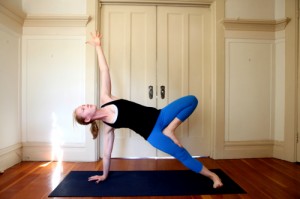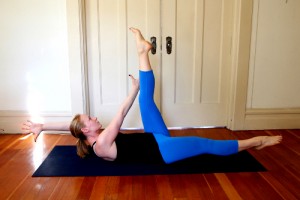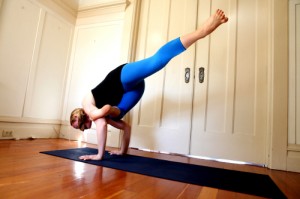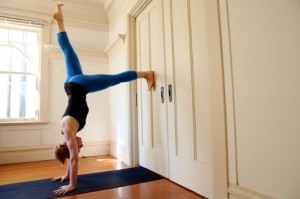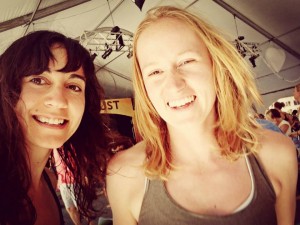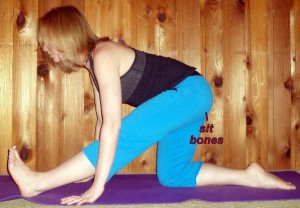One of my favorite teachers to practice with, Sean Haleen, shared the zen saying, “Nothing in nature is rushed, yet everything is accomplished,” which, as a vinyasa yoga teacher, is thought provoking. I don’t teach a ton of superfast flow and in my classes and I often say, “slow yoga is advanced yoga;” however I wouldn’t go so far as to say nothing is ever gained from moving quickly. While I don’t think your whole yoga practice should be fast flow (there often isn’t enough focus on integrity), I think playing with speed can be an amazing tool. Here are some reasons why, drawing from my own experience in yoga and fitness:
1. Going fast primes us psychologically for life: Five years ago, I visited San Francisco for two months and practiced yoga nearly every single day with teachers known for fast flow. I worked as a lifeguard back home, and a few months after my stint in SF, I responded to an extremely harrowing emergency at the pool–the type where you have to move quickly. The next week, my supervisor told me she was impressed by my ability to stay calm and take leadership in that situation. I told her it was because of yoga. Although vinyasa yoga sequencing can be crazy, hectic, up-regulating, and even stressful, the idea is to stay present, to maintain equanimity, to sustain even breath. Many people’s jobs, volunteer work, or family lives involve regular emergency situations, that require the body to be in a sympathetic (fight-or-flight) state. Although stress hormones can be damaging in the long run, activating our sympathetic nervous system isn’t a bad thing; it drastically improves our ability to respond physically. Teaching people to maintain focus in a body pumped full of adrenaline is invaluable. Of course, this should be balanced with down-regulating practices.
2.Going fast can refine our technique: Back when I was training half-marathons, I used to do one sprint-training session per week when I’d try to improve my time running distances shorter than a mile. Exploring my maximum power output at shorter distances taught me so much about technique and pushed me to recruit muscles I wasn’t fully taking advantage of. That training made my long-distance running much more efficient. Yoga is a different beast and more dangerous to do quickly, but in the case of a seasoned practitioner using speed with the intention of refining technique (which granted, often isn’t the case when people are blasting through practice), moving fast can spotlight detrimental habits. You can’t find the alignment for Warrior I in one breath? Why is your habit to come into the pose out of alignment and then fix it? You can’t make it from Warrior I to Chattarunga in one exhale? What’s holding you back from breathing more deeply? Moving quickly is another lens for svadyaya, self study.
3. Going fast is part of a balanced physical regimen: The body grows, develops, builds strength, and builds flexibility in response to stress (and loses all of that in the absence of stress). For example, the bones respond to high impact exercise (like jumping) by becoming more dense, which can prevent or delay the onset of osteoporosis. When I was a runner, my sprint training didn’t only improve my technique, it increased my muscle strength and power output. One of the reasons yoga is so great is that it stresses the body in many different ways and directions. I don’t usually recommend that people get their cardiovascular exercise solely from an asana practice–I think there are more functional ways to stress the aerobic energy system–but if someone insists on only doing yoga as their physical activity, I would recommend they have some fast movement in there. Life can move quickly and I want you to be able to meet it without getting physcially overwhelmed. Obviously there are innumerable factors we cannot control, but there are many we can; if my child ran out into traffic and got hit by a car, I would hate for it to be because I had to stop running after them to catch my breath.
None of this is in disagreement with the zen saying above, because moving quickly and rushing are different things. Moving quickly is a physical process whereas rushing is a psychological process. The art of moving quickly is to do so without rushing. In my sprint training, I was moving nearly as quickly as I could, but without the mental chatter associated with rushing. I was focusing to intently on minimizing wasted energy that I didn’t have the mental space to feel rushed. I’m effective in emergencies because I make fast decisions and move quickly without rushing, without panicking. If you incorporate fast movement into your yoga practice to get the physical benefits of moving quickly, it shouldn’t feel rushed. If it does, you’re moving too fast for your awareness to keep up with. That could mean that you need to move slower, it could mean you need to refine your awareness. Experience and a great yoga teacher can help you explore this.
